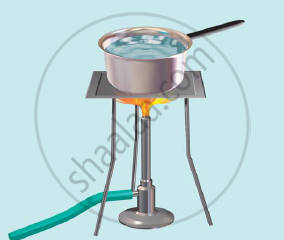Advertisements
Advertisements
प्रश्न
Match the items in column-I to the items in column-II
| Column-I | Column-II | ||
| 1. | Linear expansion | (a) | change in volume |
| 2. | Superficial expansion | (b) | hot body to cold body |
| 3. | Cubical expansion | (c) | 1.381 X 10-23 JK-1 |
| 4. | Cubical expansion | (d) | change in length |
| 5. | Boltzmann constant | (e) | change in area |
उत्तर
| Column-I | Column-II | ||
| 1. | Linear expansion | (d) | change in length |
| 2. | Superficial expansion | (e) | change in the area |
| 3. | Cubical expansion | (a) | change in volume |
| 4. | Cubical expansion | (b) | hot body to cold body |
| 5. | Boltzmann constant | (c) | 1.381 × 10-23 JK-1 |
APPEARS IN
संबंधित प्रश्न
Look at Figure. Mark where the heat is being transferred by conduction, by convection and by radiation.

Write true or false for a given statement.
Liquids are heated by conduction and radiation.
Fill in the blank
A hot metallic piece is placed in tap water contained in a bucket. Heat will flow from _______ to _________
Fill in the blank
Heat transfer in liquids and gases is by ________.
Select the correct alternative
If we add a lump of ice to a tumbler containing water,
Select the correct alternative
In the process of convection, heat travel
Maximum heat is absorbed by a ______ coloured object.
What are the modes of heat transfer?
Why are heaters fitted near the floor and air conditioners near the ceiling of a room?
Heat is the transfer of energy between two objects at different temperatures.
